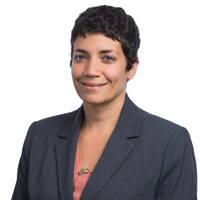YouthSave's last event in Colombia was bittersweet for YouthSave staff, partners and participants as it marked the beginning of the end for YouthSave's official operations in Colombia. We held this event, our final multi-stakeholder (MSM) meeting, on May 6, 2014 at the Club del Comercio in Bogota. The convening featured two panels, "Tendencies and Profile of Low-Income Clients" and "Financial Education for Low-Income Youth". The excitement around the learnings we shared at the MSM hinted at the possibility that YouthSave is far from done in Colombia. Beyond the learnings from YouthSave’s extensive research agenda, which will be published in the coming year, the MSM allowed us to share some important lessons with attendees and stakeholders that could have broader implications for the role of financial inclusion in poverty alleviation programming for the most vulnerable youth in the country. In fact, we heard of efforts percolating, from groups familiar with YouthSave’s model, of poverty alleviation initiatives being conceptualized that sought to combine technical training and financial education as part of a holistic model to address the dire lack of economic opportunities in Colombia’s most marginal regions, such as those abutting the southern Pacific coast. Our bank partners, Banco Caja Social (BCS), noted that a key take-away from the project was the lessons staff learned as they attempted to reach low-income youth, including a more nuanced understanding of the cultural barriers that must be overcome by financial institutions in Colombia that seek to take the bank to young people. In Colombia, bank representatives noted that although the government has enacted legislation making the banking industry responsible for providing financial education, Colombians largely remain suspicious about the motivations of financial institutions. Consequently, NGO/bank partnerships such as YouthSave are often limited, at least initially, by the general skepticism of the public.
However, with time and constant explanation of the goals of the partnership - i.e. to provide not only financial education but also the opportunity for youth to apply that education through a savings account - project partners began to overcome the prevalent suspicions. For example, by the end of April 2014, Save the Children and BCS had reached 5,838 youth with joint savings assemblies in schools. So, for banks that are considering providing products aimed at economic inclusion and/or combining these products with financial education as part of their compliance with Colombian law, YouthSave has provided a blueprint for successful collaboration.
These are only two of the reasons why, despite the end of YouthSave’s official work in Colombia, those of us involved with the project are certain that its impacts and lessons will be long-lasting indeed.
14-year-old Nayid, a YouthSave participant from Santa Rosa, Colombia shares his story in this video.
